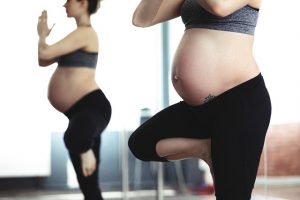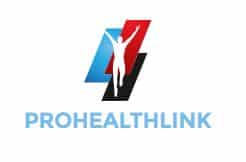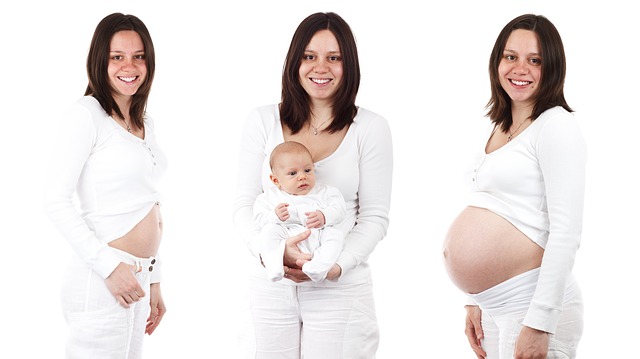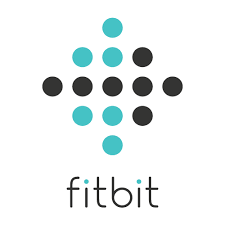Should I Exercise When I Am Pregnant? – Exercise, or physical activity (PA), is established as a critical component of health across the life span, yet only recently have we begun to realize the powerful influence of prenatal exercise for optimizing the health of two generations, the mother and the to-be-born child. Traditionally, women were told to rest and relax when they became pregnant. However, this changed in 1985 with the publication of the first set of guidelines for exercise during pregnancy by the American College of Obstetricians and Gynecologists (ACOG) (8). These guidelines were rapidly followed by the development of similar recommendations in Spain, Canada, Norway, Japan, Australia, France, Denmark, the United Kingdom, and many other countries around the world (9). Since then, empirical evidence supporting the safety and benefits of prenatal exercise has grown significantly, and global guidelines now recommend engaging in at least 150 minutes of moderate-intensity PA spread over three or more days of the week (see Figure). Indeed, our current view of prenatal PA has shifted away from focusing on the potential risks of exercise, toward prescribing exercise to improve maternal–fetal health (11,12).

Recent data demonstrate that PA during pregnancy decreases the odds of having major pregnancy complications (gestational diabetes mellitus, preeclampsia, gestational hypertension, delivering a large baby) by approximately 40% and decreases the odds of developing depression by nearly 70% (2,13–15). Interventions to prevent these complications may also reduce the odds of developing chronic diseases, including cardiovascular disease, obesity, and diabetes in both mother and baby. This evidence supporting PA during pregnancy also indicates no increased risk of having a miscarriage, small baby, or preterm birth related to the exercise (14–16). Based on the dose–response curves of randomized controlled trials of exercise compared with no exercise, the recommendation of 150 minutes/week of moderate-intensity PA is associated with at least a 25% reduction in the odds of developing each of preeclampsia, gestational hypertension, gestational diabetes, and excessive weight gain and reduces the severity of depressive symptoms (2,13,17). This 150 minutes/week threshold parallels the majority of prenatal guidelines around the world. We now have the strongest empirical evidence to date clearly demonstrating the safety and benefits of being physically active throughout pregnancy for both mother and baby.
Should I Exercise When I Am Pregnant?
Recent data demonstrate that PA during pregnancy decreases the odds of having major pregnancy complications (gestational diabetes mellitus, preeclampsia, gestational hypertension, delivering a large baby) by approximately 40% and decreases the odds of developing depression by nearly 70% (2,13–15). Interventions to prevent these complications may also reduce the odds of developing chronic diseases, including cardiovascular disease, obesity, and diabetes in both mother and baby.
Yet, despite compelling evidence, only 15% of women in the United States meet current guidelines for PA (18). Lack of time, financial cost, social support, work and family duties, and cultural practices continue to prevent many women from taking part in PA while pregnant (19). Many women also are reluctant to be physically active due to fatigue or feeling unwell, or for some women, fear for the safety of their fetus. However, these fears can be alleviated by recent, comprehensive reviews of the literature that have shown that exercise within the scope of current guidelines confers significant physical and psychological benefits, without evidence of harm to either mother or baby. Exercise professionals are ideally positioned to empower women from all socioeconomic and cultural backgrounds to engage in PA throughout their pregnancy. Indeed, there should be a focus on the risks of not being physically active during pregnancy, as those tend to present more concern than for being active. This is also an important time to place a focus on the social, emotional, and spiritual aspects of wellness, as pregnancy is joyous for many, but also can be very stressful for most.

Messaging should emphasize that prenatal PA can be a simple, low-cost therapy to reduce the risk of developing pregnancy complications and can improve many other aspects of wellness. For instance, including friends, a partner, or other children in a bout of exercise can build social and emotional support, which is so important during pregnancy. An exercise professional can offer group exercise classes that include both pre- and postnatal moms, dads, and even other family members. Being active, especially in nature, releases endorphins that can boost your mood. Encourage walking in the woods, gardening, or playing at a park to reduce stress and revitalize feelings of well-being. Practicing mindfulness and being present and aware of one’s thoughts and emotions during PA, including walking, yoga, or tai chi can encourage further feelings of well-being, reduce stress, and allow time for reflection and focus, for example, leading a walking activity while coaching clients through mindful breathing techniques. Finally, emphasizing that any amount of PA is beneficial, i.e., “some is better than none”; thus, incorporating even minimal amounts of PA is a good thing. In fact, a brisk walk for just 10 minutes per day can reduce the odds of developing preeclampsia by 25% (2), and increasing to just 15 total minutes per day has the same positive effect on the development of gestational hypertension and excessive weight gain during pregnancy (2,17).

Being active, especially in nature, releases endorphins that can boost your mood. Encourage walking in the woods, gardening, or playing at a park to reduce stress and revitalize feelings of well-being. Practicing mindfulness and being present and aware of one’s thoughts and emotions during PA, including walking, yoga, or tai chi can encourage further feelings of well-being, reduce stress, and allow time for reflection and focus, for example, leading a walking activity while coaching clients through mindful breathing techniques.
When prescribing exercise for the pregnant woman, it is important to recognize that many women can feel isolated or feel a lack of emotional support, which makes initiating exercise that much more difficult. Depression affects approximately 13% of pregnant women, and prenatal depression strongly predicts postpartum depression (5). Depression and anxiety are associated with reduced self-care, preterm labor, and low birth weight, as well as compromised caregiving and bonding with the infant after delivery. However, data show as much as a 67% reduction in the odds of developing depression in women who exercise during pregnancy (13). Even in women not diagnosed with clinical depression, exercise can substantially reduce the severity of depressive symptoms. Although it is not clear whether prenatal exercise can reduce the odds of developing postpartum depression, significant mental health benefits have been observed when women resume exercise in the postpartum period after recovery from delivery (20). Further, group exercise can provide an extra level of motivation, as you are accountable to others, while also increasing valuable social time. Socialization with other women, even the opportunity to interact with exercise leaders or personal trainers, can provide women with the social and emotional support that is critical to positive mental health and overall wellness during pregnancy.
Table of Contents
IS THERE A TIME WHEN IT IS NOT SAFE TO EXERCISE DURING PREGNANCY?
Although most women benefit from exercise during pregnancy, there are several medical conditions (“contraindications”) where moderate- to vigorous-intensity PA (MVPA) may adversely affect the health of the mother and/or fetus (21). Ensuring pregnant women are being followed by a medical professional is critical to identifying these conditions. Although these situations are uncommon, they do occur; therefore, specific cautions are warranted when prescribing exercise, and under certain circumstances, exercise should be avoided. An absolute contraindication is a condition where MVPA should be avoided because of an elevated risk of adverse events for either the mother or the fetus. Absolute contraindications may vary between specific guidelines (ACSM, ACOG, CSEP/SOGC, etc.) but most often include serious pregnancy complications such as preeclampsia and intrauterine growth restriction, as well as pre-existing cardiovascular or respiratory diseases (see Table 1) (9).

However, it should be stressed that even in these scenarios, activities of daily living may be encouraged as directed by their health care provider. By contrast, relative contraindications warrant a discussion between the pregnant patient and her obstetric health care provider to determine the potential risks and benefits of PA during pregnancy. Conditions such as mild respiratory disorders or symptomatic eating disorders may warrant a reduction in the intensity, duration and/or volume of activity, or avoidance of MVPA, depending on individual risk (21). The development of contraindications can be associated with increased rates of depression and anxiety in pregnant women, which of course presents its own paradox, because the PA typically is what reduces these very same conditions as part of increased wellness. Therefore, it is especially important to care for the mental health and well-being of women who are restricted from activity during pregnancy. Encouraging regular social contact with friends and family and promoting the continuation of light activities of daily living, including such as light-intensity walking, cooking, cleaning, and other activities (as recommended by their health care provider), will support the social, emotional, and spiritual health of pregnant women. In addition to PA, other components of a healthy lifestyle are encouraged. These include adequate and quality sleep and nutrition, as well as avoidance of smoking, alcohol, and all forms of cannabis use (22–25). A savvy exercise professional can create or refer to non-PA workshops, such as healthy cooking, healthy food shopping, and planning for life with a newborn.


In addition to the assessment of relative and absolute contraindications to exercise, during pregnancy, there are types of exercise where additional caution is also warranted. First, women are recommended to avoid activities with a high risk of physical contact or falling. This may include horseback riding, downhill skiing, riding a nonstationary bike, playing soccer, hockey, or other team sports. Although there is some protection of the fetus through the uterus and amniotic fluid, direct trauma to the abdomen can cause harm to the fetus through loss of amniotic fluid, placental abruption, and or premature labor. Second, there is limited evidence regarding the safety of pregnant women exercising in excessive heat (especially with high humidity such as hot yoga) because of an elevated risk of dehydration. Instead, exercise is recommended to be performed under cooler conditions such as in air conditioning or by avoiding the midday heat by exercising in the shade or in the early morning or evening. Other activities such as scuba diving and high altitude exercise (for those living at sea level) are not recommended (11,12,26).
There also are reasons for pregnant women to stop PA and speak to a health care provider, such as the onset of persistent excessive shortness of breath, severe chest pain, regular and painful uterine contractions, vaginal bleeding, persistent loss of fluid from the vagina, and persistent dizziness or faintness that does not resolve upon rest. These signs and symptoms can represent the initiation of labor or be a symptom of a clinically relevant complication. In these cases, women should cease exercise and seek medical attention.
ENCOURAGING PA DURING PREGNANCY AS PART OF THE WELLNESS CONTINUUM
For decades, women who were not physically active before pregnancy were discouraged from starting after becoming pregnant. This misconception has been debunked by recent studies demonstrating that women who were not active before pregnancy can derive clinically meaningful benefits by beginning to engage in regular PA after conception, even at levels well below current recommendations. Counseling women to start with a low intensity and duration of exercise and taking small steps toward increasing PA is recommended. From getting off the bus a stop early, parking the car farther away, or taking a short evening walk are all great ways to encourage a physically active lifestyle. For those women experiencing back pain or aching joints, water exercise can be a quick and easy way to find relief while getting a great workout. Doing these same activities with others, friends, family, or fellow gym members, also can improve the social, emotional, and spiritual aspects of wellness, which in turn decreases symptoms or risk for pregnancy-related depression and anxiety (Table 2). Walking remains a simple, low-cost mode of exercise and something that every exercise professional should promote. For example, for women who are inactive at conception, encouraging as little as 5 to 10 minutes of moderate walking is a great way to start. If possible, gradually increasing this 1 to 2 minutes per week as pregnancy progresses, even up to 150 minutes per week, will provide even greater benefits to both the mother and fetus. For those who find walking too uncomfortable or difficult, water-based exercises, where available, can be a great alternative.
Should I Exercise When I Am Pregnant?

Women who were active before pregnancy can continue to be active during pregnancy; however, their activities may need to be adapted. Women who wish to substantially exceed current guidelines (e.g., vigorous and or long duration exercise) should do so in consultation with their health care provider, as there is limited empirical evidence to guide global recommendations for highly active women. Heart rate zones for pregnancy have been developed to allow women to monitor their exercise intensity (11), and alternatively, the “talk test” is a simple way to determine whether exercise intensity is too high, as women should be able to carry on a conversation during moderate-intensity exercise (26).
Historically, women with certain conditions, including preeclampsia or intrauterine growth restriction, were prescribed bed rest with the goal of improving maternal and fetal health outcomes. However, this practice is no longer recommended as empirical evidence now suggests that bed rest induces negative effects on maternal health such as anxiety, depression, muscle atrophy, bone loss, venous thromboembolism, and gestational diabetes. Fetal outcomes are not improved, and some evidence suggests that earlier delivery may occur (27).
Historically, women with certain conditions, including preeclampsia or intrauterine growth restriction, were prescribed bed rest with the goal of improving maternal and fetal health outcomes. However, this practice is no longer recommended as empirical evidence now suggests that bed rest induces negative effects on maternal health such as anxiety, depression, muscle atrophy, bone loss, venous thromboembolism, and gestational diabetes. Fetal outcomes are not improved, and some evidence suggests that earlier delivery may occur (27).
Summary

As exercise and health professionals, it’s important to consider a woman’s physical, mental, social, and spiritual health when prescribing exercise. Health and fitness professionals can encourage women during this period to be active and to include other areas of wellness by inviting friends to be active with them, or practicing mindfulness during PA, or joining group exercise session for increased social interactions. During pregnancy, there will be days where a woman feels tired or unwell, encouraging adequate rest and sleep to ensure recovery is as important as encouraging a resumption of activity after recovery. Consider the individual’s goal, whether it be disease prevention, stress reduction, or mood enhancement, in the design of an exercise plan or in making recommendations regarding PA. Although prescribing exercise during pregnancy requires additional considerations beyond a non-pregnant women, such as time constraints, fatigue, and caring for other children, it is possible to develop effective strategies that increase PA while at the same time improving different aspects of wellness, particularly socio-emotional well-being. And all of these can occur with as little as 10 minutes a day of PA!
BRIDGING THE GAP
Extensive evidence now supports the safety and benefits of prenatal PA to support the health and wellness of pregnant women. Therefore, it is critical that women and exercise professionals shift their individual and collective perspective of prenatal PA away from the potential risks of exercise, and instead realize that an effective exercise prescription can improve health, with subsequent benefits to many other dimensions of wellness. In fact, it may be just as important to consider the many risks of not being physically active during pregnancy.
Manitoba Harvest Organic Hemp Protein Supplement, Vanilla, 16 Ounce
Contains 8g protein, 1.4g omegas and 10g fiber per 30 gram serving
Organic, raw whole food protein powder
Made with Fair Trade cocoa and sweetened with low glycemic index palm sugar
Price: $38.67
HCF Happy, Calm & Focused – Brain Focus, Attention, Concentration & Mood Supplement (90 Count) – FQ Foundation Amino…
What You Get? - The one month supply of HCF Happy, Calm & Focused (NPN #80056386) brain supplement (fueled by F&Q amino acids & 15+ pure & effective neuro-nutrients) contains 90 easy to swallow vegetable capsules.
Guaranteed - HCF Happy, Calm & Focused is hypoallergenic, and contains the purest neuro-nutrients obtainable: no preservatives, no chemicals, no coatings, no calories, no sweeteners, no enhancers, no yeast, no fragrance, no dairy, no gluten, no nuts, no wheat.
HCF Happy, Calm & Focused Benefits - Helps enhance focus*, increase concentration*, sustain feeling happy*, feel internally calm*, promotes healthy sleep cycles*, helps increase attention*, helps improve alertness & memory*, helps curb anxious eating*, help losing weight*, strengthens neural pathways*, increase learning abilities*, be energized & strong*, supports hormone balance*
Price: $49.95
#1 Natural Brain Function Support for Memory, Focus & Clarity – Mental Performance Nootropic – Physician-Formulated…
UPGRADE YOUR BRAIN. Using a premium blend of clinically proven ingredients including ginkgo biloba, St. John's Wort, and other natural brain boosters, our premium blend naturally provides your brain the support it needs to function at its highest level.
INCREASE YOUR FOCUS & IMPROVE YOUR MOOD. Natural ingredients will help reduce stress and stabilize your mood by using clinically proven herbal remedies such as L-Glutamine and more.
ALL NATURAL NON-GMO PREMIUM BLEND - Every ingredient is premium quality and non-GMO, with zero fillers, binders, or artificial additions. As a result, you will get the most satisfied results from a natural supplement!
Price: $24.97
References
1. Davenport MH, Skow RJ, Steinback CD. Maternal responses to aerobic exercise in pregnancy. Clin Obstet Gynecol. 2016;59(3):541–51. doi: 10.1097/grf.0000000000000201. PubMed PMID: 27042798.
2. Davenport MH, Ruchat SM, Poitras VJ, et al. Prenatal exercise for the prevention of gestational diabetes mellitus and hypertensive disorders of pregnancy: a systematic review and meta-analysis. Br J Sports Med. 2018;52(21):1367–75. doi: 10.1136/bjsports-2018-099355. PubMed PMID: 30337463.
3. Bellamy L, Casas JP, Hingorani AD, Williams D. Type 2 diabetes mellitus after gestational diabetes: a systematic review and meta-analysis. Lancet (London, England). 2009;373(9677):1773–9. doi: 10.1016/s0140-6736(09)60731-5. PubMed PMID: 19465232.
4. Mosca L, Benjamin EJ, Berra K, et al. Effectiveness-based guidelines for the prevention of cardiovascular disease in women—2011 update. Circulation. 2011;123(11):1243–62. doi:10.1161/cir.0b013e31820faaf8.
5. Gaynes BN, Gavin N, Mweltzer-Brody S, et al. Perinatal Depression: Prevalence, Screening Accuracy, and Screening Outcomes. Evidence Reports/Technoogy Assessments. No. 119. Rockville (MD): Agency for Healthcare Research and Quality (US); 2005.
6. Chabrol HTF, Armitage J. Acceptability of psychotherapy and antidepressants for postnatal depression among newly delivered mothers. J Reprod Infant Psychol. 2004;22:5–12.
- Cited Here |
- PubMed | CrossRef
7. Dennis CL, Chung-Lee L. Postpartum depression help-seeking barriers and maternal treatment preferences: a qualitative systematic review. Birth (Berkeley, Calif). 2006;33(4):323–31. doi: 10.1111/j.1523-536X.2006.00130.x. PubMed PMID: 17150072.
8. American College of Obstetricians and Gynecologists. ACOG Home Exercise Programs: Exercise during Pregnancy and the Postnatal Period. Washington (DC): ACOG; 1985.
9. Evenson KR, Mottola MF, Artal R. Review of recent physical activity guidelines during pregnancy to facilitate advice by health care providers. Obstet Gynecol Surv. 2019;74(8):481–9. doi: 10.1097/ogx.0000000000000693. PubMed PMID: 31418450.
10. Davenport MH, Horbachewsky T, Brown M, et al. Infographic. Prenatal physical activity: baby steps for better health. Br J Sports Med. 2020;54:360–61. doi: 10.1136/bjsports-2019-101056. PubMed PMID: 31377724, bjsports-2019-101056.
11. Mottola MF, Davenport MH, Ruchat SM, et al. 2019 Canadian guideline for physical activity throughout pregnancy. Br J Sports Med. 2018;52(21):1339–46. doi: 10.1136/bjsports-2018-100056. PubMed PMID: 30337460.
12. U.S. Department of Health and Human ServicesPhysical Activity Guidelines for Americans. In: Services USDoHaH, editor. 2nd ed. Washington (DC): U.S. Department of Health and Human Services; 2018.
13. Davenport MH, McCurdy AP, Mottola MF, et al. Impact of prenatal exercise on both prenatal and postnatal anxiety and depressive symptoms: a systematic review and meta-analysis. Br J Sports Med. 2018;52(21):1376–85. Epub 2018/10/20. doi: 10.1136/bjsports-2018-099697. PubMed PMID: 30337464.
14. Davenport MH, Meah VL, Ruchat SM, et al. Impact of prenatal exercise on neonatal and childhood outcomes: a systematic review and meta-analysis. Br J Sports Med. 2018;52(21):1386–96. doi: 10.1136/bjsports-2018-099836. PubMed PMID: 30337465.
15. Dipietro L, Evenson KR, Bloodgood B, et al. Benefits of physical activity during pregnancy and postpartum: an umbrella review. Med Sci Sports Exerc. 2019;51(6):1292–302. doi: 10.1249/mss.0000000000001941. PubMed PMID: 31095086; PubMed Central PMCID: PMCPMC6527310.
16. Davenport MH, Kathol AJ, Mottola MF, et al. Prenatal exercise is not associated with fetal mortality: a systematic review and meta-analysis. Br J Sports Med. 2019;53(2):108–15. doi: 10.1136/bjsports-2018-099773. PubMed PMID: 30337346.
17. Ruchat SM, Mottola MF, Skow RJ, et al. Effectiveness of exercise interventions in the prevention of excessive gestational weight gain and postpartum weight retention: a systematic review and meta-analysis. Br J Sports Med. 2018;52(21):1347–56. doi: 10.1136/bjsports-2018-099399. PubMed PMID: 30337461.
18. Hesketh KR, Evenson KR. Prevalence of U.S. pregnant women meeting 2015 ACOG Physical Activity Guidelines. Am J Prevent Med. 2016;51(3):e87–9. Epub 2016/08/22. doi: 10.1016/j.amepre.2016.05.023. PubMed PMID: 27544437; PubMed Central PMCID: PMCPMC4982752.
- Cited Here |
- PubMed | CrossRef
19. Coll CVN, Domingues MR, Goncalves H, Bertoldi AD. Perceived barriers to leisure-time physical activity during pregnancy: a literature review of quantitative and qualitative evidence. J Sci Med Sport. 2017;20(1):17–25. doi: 10.1016/j.jsams.2016.06.007. PubMed PMID: 27372276.
20. McCurdy AP, Boule NG, Sivak A, Davenport MH. Effects of exercise on mild-to-moderate depressive symptoms in the postpartum period: a meta-analysis. Obstet Gynecol. 2017;129(6):1087–97. doi: 10.1097/aog.0000000000002053. PubMed PMID: 28486363.
21. Meah VL, Davies GA, Davenport MH. Why can’t I exercise during pregnancy? Time to revisit medical ‘absolute’ and ‘relative’ contraindications: systematic review of evidence of harm and a call to action. Br J Sports Med. Published Online First: 08 June 2020.
22. Crume TL, Juhl AL, Brooks-Russell A, Hall KE, Wymore E, Borgelt LM. Cannabis use during the perinatal period in a state with legalized recreational and medical marijuana: the association between maternal characteristics, breastfeeding patterns, and neonatal outcomes. J Pediatr. 2018;197:90–6. doi: 10.1016/j.jpeds.2018.02.005. PubMed PMID: 29605394.
23. Ferraro ZM, Chaput JP, Gruslin A, Adamo KB. The potential value of sleep hygiene for a healthy pregnancy: a brief review. ISRN Family Medicine. 2014;2014:928293. doi: 10.1155/2014/928293. PubMed PMID: 24967333; PubMed Central PMCID: PMCPMC4041265.
24. O’Connor DL, Blake J, Bell R, et al. Canadian consensus on female nutrition: adolescence, reproduction, menopause, and beyond. J Obstets Gynaecol Canada. 2016;38(6):508–54.e18. Epub 2016/07/03. doi: 10.1016/j.jogc.2016.01.001. PubMed PMID: 27368135.
25. Wong S, Ordean A, Kahan M. SOGC clinical practice guidelines: substance use in pregnancy: no. 256, April 2011. Int J Gynaecol Obstet. 2011;114(2):190–202. Epub 2011/08/30. doi: 10.1016/j.ijgo.2011.06.001. PubMed PMID: 21870360.
- Cited Here |
- PubMed | CrossRef
26. American College of Sports Medicine. ACSM’s Guideline for Exercise Testing and Prescription. 10th ed. Philadelphia (PA): Wolters Kluwer Health; 2017.






























